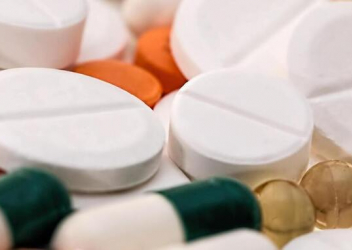Research In Action
Research In Action
Breadcrumb

Over the past several years, there has been widespread media coverage on the opioid epidemic in the United States. The epidemic has taken a significant toll on human life. Thousands continue to die annually from opioid overdoses, and millions of individuals either misuse or struggle with addiction to prescription or illicit opioids.
A recent discussion paper by The National Academy of Medicine identifies several special populations that are particularly at risk from this public health crisis. One of these populations is our country’s next generation—teenagers and young adults.
Biological Risk
The article highlights several neurologic factors that make young individuals more susceptible to opioids:
- The brains of adolescents are still developing and may not thoroughly evaluate long-term, risk-benefit decisions. Areas of the brain involved in executive control, decision-making, and judgement are not completely developed until around 25 years of age.
- The teenage brain is also more flexible and plastic. It can create new neuronal connections and learn behaviors faster than older adults. This can lead to rapid, learned biological reliance on a substance.
Social Risk
From a psychosocial perspective, adolescents are not only at risk for substance misuse, but also face unique barriers to seeking help for a substance use disorder:
- Increased risk-taking behaviors and peer pressure in this age group can contribute to trying or misusing opioids. Peer pressure and stigma may also lead to a reluctance to seek treatment.
- Developmentally, adolescents often have shifting relationships with authority figures. Current treatment models, which focus on caregiver and physician involvement, may not appeal to teens, even if they are interested in obtaining help.
- The report’s authors noted that fears over confidentiality may contribute to hesitancy in seeking treatment among teens. Teenagers are often worried that their substance use will be disclosed to parents or school officials, leading to punishment or other consequences.
Opioid Treatment and Prevention in Teens
Tackling misuse and substance use disorders among adolescents requires a multimodal approach that includes:
- Preventing opioid misuse before it starts with programs that focus on identifying at-risk youth and address risk factors that predispose to substance misuse. Reinforcing positive relationships and social influences that teens already have is also important.
- Teaching providers skills to help them engage in shared decision-making with teenagers who are worried about confidentiality or face other barriers to accessing treatment resources.
- Developing strategies to connect with adolescents in “non-traditional” forums, including youth centers and social media.
For those seeking help with opioid misuse or addiction, the Substance Abuse and Mental Health Services Administration staffs a 24/7 national helpline at 1-800-662-HELP (4357). If you suspect that a child or adolescent has overdosed on an opioid, immediately seek medical help, and call the Poison Help Hotline at 1-800-222-1222.




